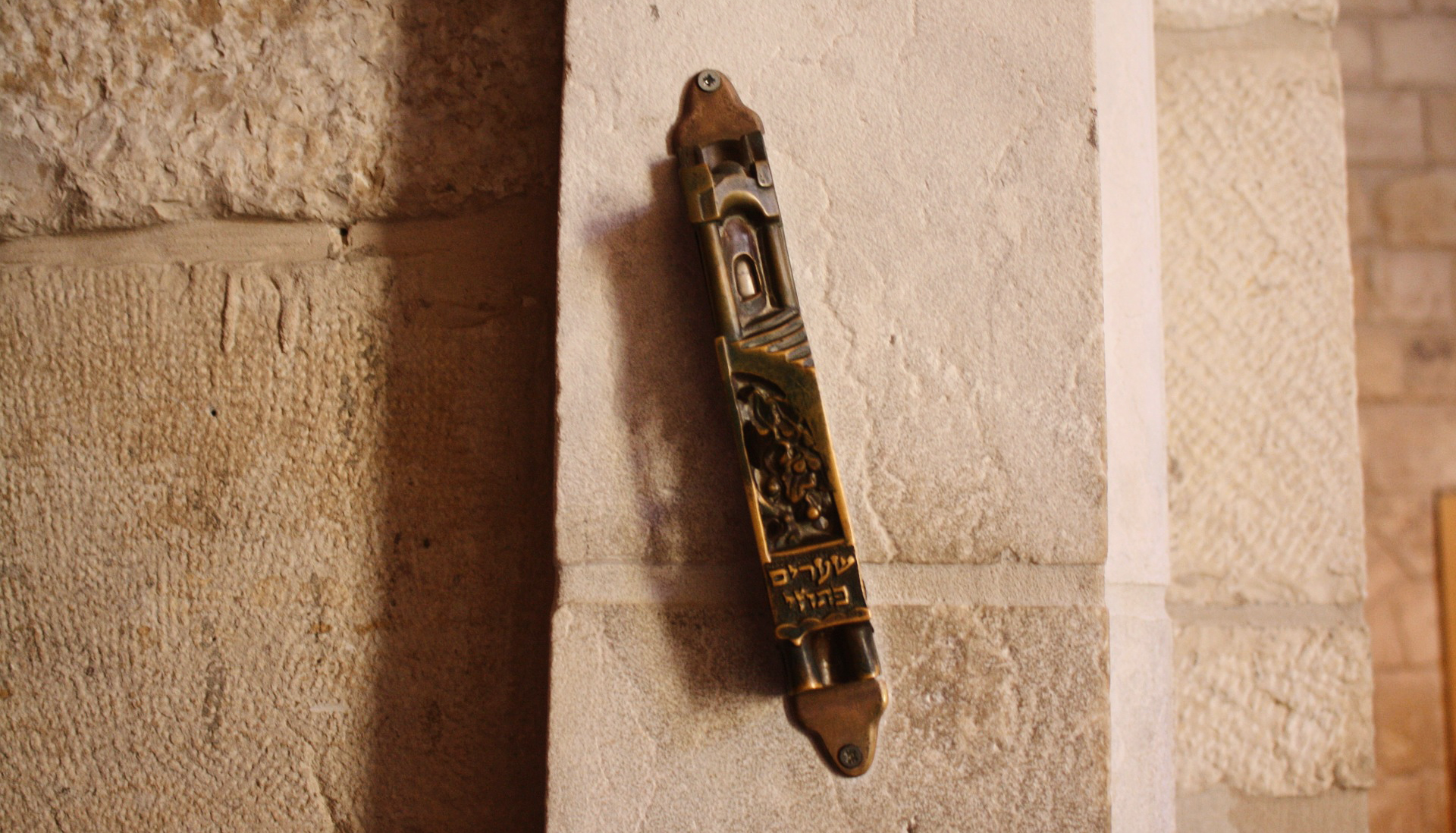“Hear, O Israel: YHVH our Elohim is one YHVH: And thou shalt love YHVH thy Elohim with all thine heart, and with all thy soul, and with all thy might. And these words, which I command thee this day, shall be in thine heart: And thou shalt teach them diligently unto thy children, and shalt talk of them when thou sittest in thine house, and when thou walkest by the way, and when thou liest down, and when thou risest up. And thou shalt bind them for a sign upon thine hand, and they shall be as frontlets between thine eyes. And thou shalt write them upon the posts of thy house, and on thy gates.” -Deuteronomy 6:4–9 KJV (with the names of God)
Many Jews, and now even Christians, will affix a mezuzah to the doorpost of their homes to fulfill the mitzvah to “write the words of God on the gates and doorposts of your house” (Deuteronomy 6:9, & 11:20). Some will put a mezuzah in every doorway in their home, except closets, laundry rooms, and bathrooms, etc. as these are not living spaces. But what is a mezuzah?
Doorpost
A mezuzah, Hebrew (מזוזה) “doorpost,” or (מזוזוֹת) mezuzot in the plural, is a decorative case with piece of parchment called a klaf (or qelaf, קלף) inside. The decorative case will likely have the Hebrew letter Shin written upon it, the first letter of one of God’s names, Shaddai (Hebrew: Almighty). The paper, the kalf, is inscribed with specific Hebrew verses from the Torah. These verses consist of the Jewish prayer, Shema Yisrael. This prayer is Deuteronomy 6:4–9 and 11:13-21. Sometimes Numbers 15:38-41 may be added at the end as well. This is the scripture that asks us to wear the tzitzit. The prayer is inscribed on one side of the parchment. On its reverse side of the paper “Shaddai” is written.
How These are Made
In Judaism, the klaf parchment is prepared by a qualified scribe called a sofer stam. This is one that has studied the relevant religious laws, and is well practiced in writing. The verses are traditionally written in Hebrew, in black ink with a special quill pen made from a feather or a reed. Once the prayer is written and the ink dried, the parchment is then rolled up and placed inside the case. These, both the mezuzah or the klaf or both together, may be easily found and purchased on websites like Amazon. (This link is not an endorsement of Amazon or any of the products offer there.)
In the Church of Jesus Christ in Christian Fellowship we do not currently make or sell the mezuzah or the klaf. However, anyone ordained to the priesthood, even a Deacon, may write the kalf, in Hebrew, English, or one’s native language. It is up to each individual or family as to how or where they wish to make or obtain these, if they desire to use them. We recommend that a Priesthood holder write the text as they should do so in a meditation, pushing the power of God, flowing out of them onto the paper.
Why Have Them?
The Christian way of life is a portable faith, we take it with us everywhere we go. Yet as Latter Day Saints our homes are very special. They are our family temples. They are places of faith where we teach and learn from one another. Placing a mezuzah in our doorways reminds us of our covenants with God every time we enter or leave. In this way, it acts as a protection for us. It also serves as a symbol, like a cross, to everyone that sees it that this is a house in the Covenant, that the people within follow the Torah in our lives, rituals, and beliefs. The mezuzah then is like the key to a portal to the sacred space that is our homes.
Some also see the mazuzah as a talisman meant to ward off evil. In this manner, it is a protective device in addition to being a sign and reminder of the Covenant. Similar to the garments or the red bracelet, the mezuzah can keep us safe from evil, as it reminds us of our connection to God, eliminating our fears. It should be remembered that it is our personal ties to the Lord that truly protect us. These talismans are merely tools reminding us of this protection that comes from our personal relationships with God.
Placing the Mezuzah
When purchasing a metzuzah, be sure to verify that it is made for indoor or outdoor use before putting it on the outer doors of one’s home. The mezuzah should be attached to the right side of the door frame as one enters. It should be placed about a third of the way down from the top of the door frame, and an angle with the top pointing inward. The mezuzah should be secured firmly, as it contains the name and Word of God, and as it will be blessed. For these reasons it is sacred. After it is attached, a Priest or Priestess, or one ordained and Endowed in the Melchizedek or Magdalene Priesthood should, fully dressed in their temple robes, read the following prayer:
In Hebrew:
בָּרוּךְ אַתָּה יְהֹוָה , אֱלֹהֵֽינוּ מֶלֶךְ הָעוֹלָם, אֲשֶׁר קִדְּשָׁנוּ בְּמִצְוֹתָיו וְצִוָּנוּ לִקְבֹּעַ מְזוּזָה:
Transliteration
Barukh ata YHVH Eloheinu melekh ha-olam, asher kiddeshanu be-mitzvotav ve-tzivvanu likboa mezuzah.
In English:
Blessed art thou, YHVH our Elohim, the Eternal God, who has sanctified us with His mitzvot, asking us to affix this mezuzah.
Ending:
So mote it be; Amen.
After this blessing has been recited, those present may repeat “Amen,” as moved by the Spirit.
